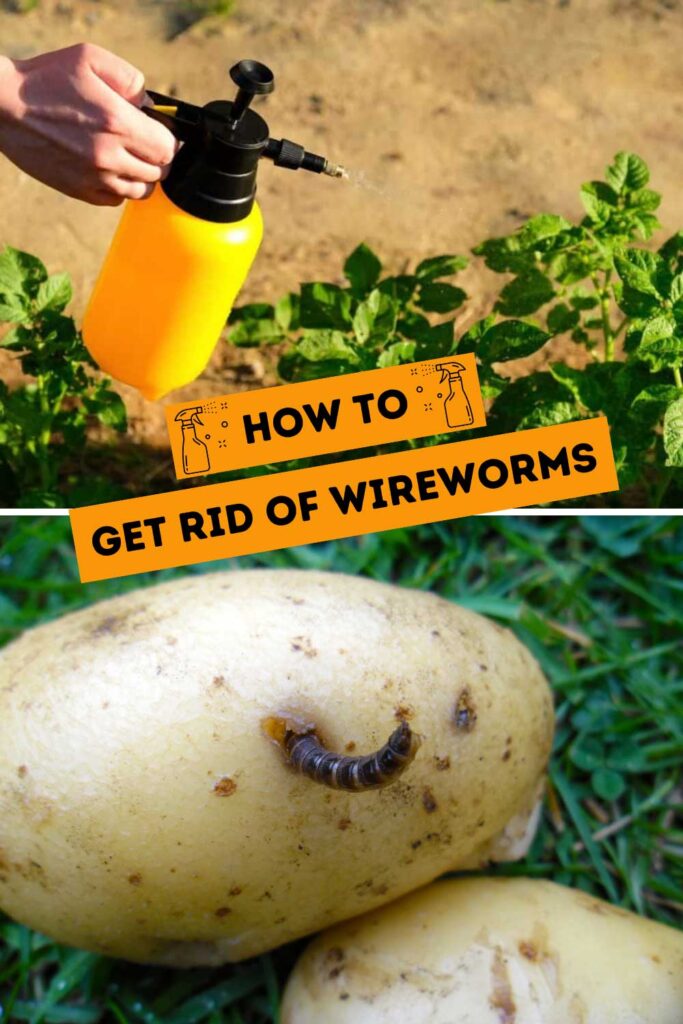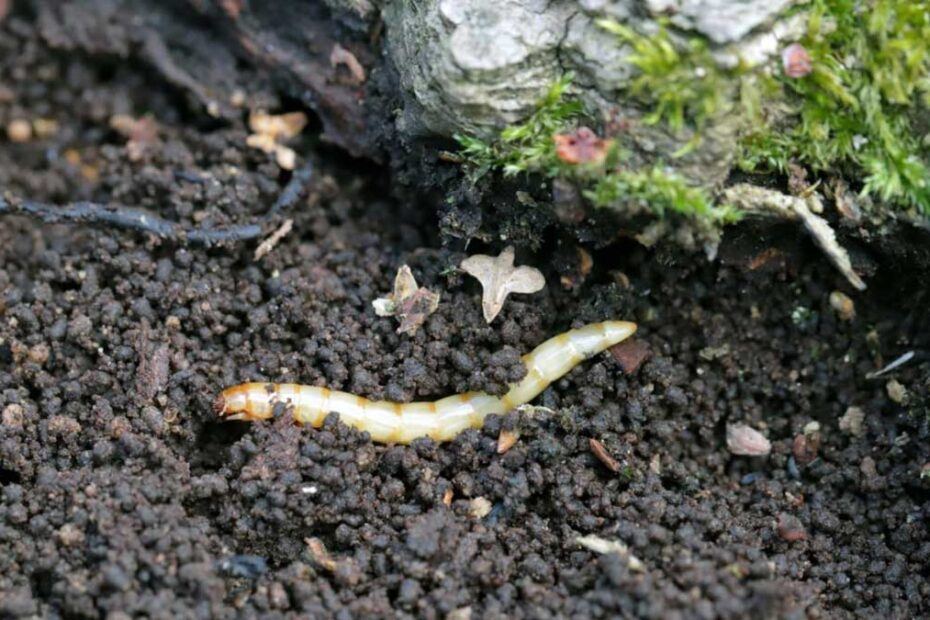Wireworms can wreak havoc on your garden, turning your hard work into a frustrating battle. These larvae of click beetles burrow into the roots of your plants, causing significant damage and stunting growth. If you’re noticing wilting plants or holes in your crops, it’s time to take action.
Understanding how to effectively get rid of wireworms is crucial for maintaining a healthy garden. By implementing a few strategic methods, you can protect your plants and ensure a bountiful harvest. Ready to reclaim your garden? Let’s jump into the best ways to tackle these pesky pests.
Key Takeaways
- Identify and Understand Wireworms: Wireworms are the larvae of click beetles, characterized by their yellowish-brown, segmented bodies. Recognize their lifecycle stages and signs of infestation, such as wilting and root damage, to manage them effectively.
- Natural Control Methods: Employ strategies like crop rotation, diversification, encouraging beneficial predators, and using trap crops (e.g., buckwheat, carrots, and potatoes) to naturally manage and reduce wireworm populations.
- Chemical Treatments: Use chemical treatments if natural methods prove insufficient. Apply insecticidal soaks, systemic pesticides, or granular insecticides carefully, adhering to safety guidelines to minimize environmental harm.
- Implement Preventative Measures: Focus on soil preparation techniques, regular monitoring, and planting wireworm-resistant varieties to prevent future infestations. Practices like tillage, crop residue management, and choosing non-host crops can create an inhospitable environment for wireworms.

Understanding Wireworms
Wireworms, the soil-dwelling larvae of click beetles, cause significant damage to crops. By delving into their characteristics and lifecycle, you can better equip yourself to manage and eliminate these pests, safeguarding your garden.
What Are Wireworms?
Wireworms are the juvenile form of click beetles. Identifying these pests can simplify your pest management efforts.
- Appearance: Wireworms are typically yellowish-brown, segmented, and measure 1-2 inches in length.
- Habitat: They thrive in moist soil with abundant organic material.
- Behavior: These larvae feed on the roots of plants, causing substantial agricultural damage.
The Life Cycle Of Wireworms
Understanding the life cycle of wireworms is crucial to effective control.
- Egg Stage: Female click beetles lay eggs in the soil during late spring or early summer.
- Larval Stage: This stage spans 2-6 years, making it the most destructive period. Wireworms feed on the roots and underground parts of plants.
- Pupal Stage: After the larval phase, wireworms pupate in the soil for several weeks.
- Adult Stage: Adult click beetles emerge from the soil and live above ground for a few months before repeating the cycle.
Common Signs Of Infestation
Recognizing signs of a wireworm infestation can help you take timely action.
- Wilting: Plants may wilt even in well-watered conditions due to root damage.
- Stunted Growth: Infested plants often display reduced growth rates.
- Root Damage: Upon examination, plant roots may show small, circular holes or extensive tunneling.
By familiarizing yourself with wireworms and their lifecycle, you can monitor and manage infestations more effectively. Look out for the common signs and use targeted methods to minimize damage to your garden.
Natural Methods To Control Wireworms
Combating wireworms can be achieved through several natural methods. By adopting these strategies, you can manage wireworm infestations effectively and protect your garden.
Crop Rotation And Diversification
Crop rotation and diversification form a cornerstone of wireworm management.
Crop Rotation
- Reduces Wireworm Population: Plant non-host crops (e.g., beans, lettuce) every few years. This practice disrupts wireworm life cycles.
- Nutrient Balancing: Different crops require various nutrients. Rotating crops prevents soil nutrient depletion.
- Reduced Pest Pressure: Reduces the likelihood of wireworm population build-up over multiple seasons.
Diversification
- Mixed Crop Planting: Plant a variety of crops in one area. Mixing resistant and susceptible plants can confuse wireworms and reduce damage.
Beneficial Predators And Parasites
Encouraging natural predators and parasites can be an effective wireworm control strategy.
Beneficial Predators
- Ground Beetles: Consume wireworms. Attract them by planting flowering plants.
- Birds: Feed on wireworms. Install bird feeders to encourage their presence.
Parasites
- Entomopathogenic Nematodes (EPNs): Infect and kill wireworms. Apply them to infected soil to decrease wireworm populations.
Using Trap Crops
Trap crops can divert wireworms away from your main crops.
- Buckwheat: Attracts wireworms away from valuable crops. Plant around garden perimeters.
- Carrots And Potatoes: Serve as sacrificial crops. Plant these in a separate area, then remove and dispose of them with wireworms included.
These natural methods help manage wireworm populations while maintaining garden health. Adopting crop rotation, encouraging beneficial predators, and using trap crops contribute to long-term wireworm control.
Chemical Treatments
Chemical treatments can be an effective option for controlling wireworm infestations in cases where natural methods have proven insufficient. It’s crucial to apply these treatments correctly to minimize harm to the environment and non-target organisms.
When To Use Chemical Pesticides
Choosing the right time to use chemical pesticides enhances their effectiveness and reduces unnecessary risks. Use chemical treatments if:
- Natural methods fail to reduce wireworm populations significantly
- You observe severe plant damage, such as widespread wilting or root destruction
- The infestation level is too high for biological controls to manage
Proper timing ensures you mitigate harm to beneficial insects and maintain soil health.
Types Of Chemical Treatments
Several chemical treatments can address wireworm issues effectively. Here are some types and their applications:
Insecticidal Soaks:
- Used for treating soil before planting
- Involves soaking soil with an insecticidal solution targeting wireworm larvae
Systemic Pesticides:
- Applied to seeds before planting
- Protect plants by making their tissues toxic to wireworms that feed on them
Granular Insecticides:
- Mixed into the soil during planting
- Provide prolonged protection by releasing active ingredients gradually
Safety Precautions
While chemical treatments can be effective, handling them incorrectly poses risks. Follow these safety precautions:
- Read Labels Carefully: Ensure you understand the correct usage and dosages.
- Use Protective Gear: Wear gloves, masks, and protective clothing to avoid direct contact.
- Practice Safe Storage: Keep chemicals out of reach of children and pets and store them in a cool, dry place.
- Follow Application Guidelines: Avoid over-application and adhere to recommended intervals between treatments.
- Dispose of Containers Properly: Follow local regulations for disposing of pesticide containers to prevent environmental contamination.
By understanding when and how to use chemical treatments safely, you can effectively manage wireworm infestations while minimizing adverse effects.
Preventative Measures
Implementing preventative measures is crucial for minimizing wireworm damage in your garden. By focusing on soil preparation, regular monitoring, and selecting resistant plant varieties, you can effectively reduce the risk of wireworm infestations.
Soil Preparation Techniques
Proper soil preparation reduces the chances of wireworm infestations. Key techniques include:
- Tillage: Practice deep tillage in late spring and fall to expose wireworms to predators and unfavorable conditions.
- Crop Residue Management: Remove crop residues from previous seasons to minimize organic material that attracts wireworms.
- Soil Health: Maintain a balanced pH level, around 6.0-7.0, and ensure proper drainage to create an inhospitable environment for wireworms.
Regular Monitoring And Inspections
Consistent monitoring helps detect wireworm presence early. Follow these steps:
- Soil Sampling: Take soil samples from different garden areas and check for wireworm larvae.
- Trap Baiting: Use pieces of carrot or potato buried in the soil to attract wireworms, then inspect them regularly.
- Plant Inspections: Look for signs of wireworm damage, like stunted growth or wilting, and act promptly if detected.
Choosing Resistant Plant Varieties
Selecting wireworm-resistant plant varieties helps safeguard your garden. Focus on these points:
- Plant Selection: Choose crops with a natural resistance to wireworms, such as certain legumes and brassicas.
- Seed Treatments: Opt for seeds treated with natural repellents to deter wireworms during germination and early growth stages.
- Crop Rotation: Carry out a rotation that includes non-host crops to break the wireworm lifecycle.
These preventative measures, if integrated into your gardening routine, can significantly reduce wireworm infestations. Prioritize soil health, monitor regularly, and select resistant plants for a robust and healthy garden.
Conclusion
Effectively managing wireworms requires a combination of understanding their lifecycle and implementing strategic control methods. Natural approaches such as crop rotation diversification and encouraging beneficial predators can significantly reduce wireworm populations. When natural methods aren’t enough chemical treatments can be used judiciously to tackle severe infestations.
Preventative measures like soil preparation regular monitoring and selecting resistant plant varieties are essential to maintaining a wireworm-free garden. By integrating these strategies you’ll protect your plants from wireworm damage and ensure a thriving healthy garden.
Frequently Asked Questions
What are wireworms?
Wireworms are the larvae of click beetles. They are typically yellowish-brown, segmented, and measure 1-2 inches in length. They thrive in moist soil with abundant organic material and can cause significant damage to garden plants by burrowing into their roots.
How do wireworms damage garden plants?
Wireworms damage garden plants by burrowing into their roots, which can stunt plant growth and cause wilting. This root damage can eventually lead to the death of the plants if not managed.
What are some natural methods to control wireworms?
Natural methods to control wireworms include crop rotation, mixed crop planting, encouraging beneficial predators like ground beetles and birds, and using entomopathogenic nematodes (EPNs). You can also use trap crops like buckwheat and sacrificial crops such as carrots and potatoes.
When should I consider using chemical treatments for wireworms?
Chemical treatments should be considered when natural methods fail to control the infestation, when you notice severe plant damage, or when the infestation levels are too high for biological controls. Always follow safety precautions when using chemicals.
What are some effective chemical treatments for wireworms?
Effective chemical treatments for wireworms include insecticidal soaks, systemic pesticides, and granular insecticides. It’s important to follow the instructions on the labels and use protective gear to minimize environmental harm.
What preventative measures can I take to minimize wireworm damage?
Preventative measures include deep tillage and crop residue management to create an inhospitable environment for wireworms. Regular monitoring and inspections, selecting resistant plant varieties, and using treated seeds can also help safeguard your garden.
How can I recognize a wireworm infestation?
Common signs of a wireworm infestation include wilting plants, stunted growth, and visible root damage. Regularly inspecting your plants and soil can help you detect infestations early.
What is the lifecycle of wireworms?
The lifecycle of wireworms includes several stages: egg, larval (which lasts 2-6 years), pupal, and adult click beetle. Understanding this lifecycle can help in effectively timing control measures.
